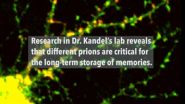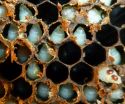(Press-News.org) A new study has discovered mysterious behaviour of a material that acts like an insulator in certain measurements, but simultaneously acts like a conductor in others. In an insulator, electrons are largely stuck in one place, while in a conductor, the electrons flow freely. The results, published today (2 July) in the journal Science, challenge current understanding of how materials behave.
Conductors, such as metals, conduct electricity, while insulators, such as rubber or glass, prevent or block the flow of electricity. But by tracing the path that electrons follow as they move through a material, researchers led by the University of Cambridge found that it is possible for a single material to display dual metal-insulator properties at once - although at the very lowest temperatures, it completely disobeys the rules that govern conventional metals. While it's not known exactly what's causing this mysterious behaviour, one possibility is the existence of a potential third phase which is neither insulator nor conductor.
The duelling metal-insulator properties were observed throughout the interior of the material, called samarium hexaboride (SmB6). There are other recently-discovered materials which behave both as a conductor and an insulator, but they are structured like a sandwich, so the surface behaves differently from the bulk. But the new study found that in SmB6, the bulk itself can be both conductor and insulator simultaneously.
"The discovery of dual metal-insulator behaviour in a single material has the potential to overturn decades of conventional wisdom regarding the fundamental dichotomy between metals and insulators," said Dr Suchitra Sebastian of the University's Cavendish Laboratory, who led the research.
In order to learn more about SmB6 and various other materials, Sebastian and her colleagues traced the path that the electrons take as they move through the material: the geometrical surface traced by the orbits of the electrons leads to a construction which is known as a Fermi surface. In order to find the Fermi surface, the researchers used a technique based on measurements of quantum oscillations, which measure various properties of a material in the presence of a high magnetic field to get an accurate 'fingerprint' of the material. For quantum oscillations to be observed, the materials must be as close to pure as possible, so that there are minimal defects for the electrons to bump into. Key experiments for the research were conducted at the National High Magnetic Field Laboratory in Tallahassee, Florida.
SmB6 belongs to the class of materials called Kondo insulators, which are close to the border between insulating and conducting behaviour. Kondo insulators are part of a larger group of materials called heavy fermion materials, in which complex physics arises from an interplay of two types of electrons: highly localised 'f' electrons, and 'd' electrons, which have larger orbits. In the case of SmB6, correlations between these two types of electrons result in insulating behaviour.
"It's a dichotomy," said Sebastian. "The high electrical resistance of SmB6 reveals its insulating behaviour, but the Fermi surface we observed was that of a good metal."
But the mystery didn't end there. At the very lowest temperatures, approaching 0 degrees Kelvin (-273 Celsius), it became clear that the quantum oscillations for SmB6 are not characteristic of a conventional metal. In metals, the amplitude of quantum oscillations grows and then levels off as the temperature is lowered. Strangely, in the case of SmB6, the amplitude of quantum oscillations continues to grow dramatically as the temperature is lowered, violating the rules that govern conventional metals.
The researchers considered several reasons for this peculiar behaviour: it could be a novel phase, neither insulator nor conductor; it could be fluctuating back and forth between the two; or because SmB6 has a very small 'gap' between insulating and conducting behaviour, perhaps the electrons are capable of jumping that gap.
"The crossover region between two different phases - magnetic and non-magnetic, for example - is where the really interesting physics happens," said Sebastian. "Because this material is close to the crossover region between insulator and conductor, we found it displays some really strange properties - we're exploring the possibility that it's a new quantum phase."
INFORMATION:
The Cambridge researchers were funded by the Royal Society, the Winton Programme for the Physics of Sustainability, the European Research Council and the Engineering and Physical Sciences Research Council (UK).
Researchers at Vanderbilt University and the National University of Singapore have determined the structure of a human monoclonal antibody which, in an animal model, strongly neutralizes a type of the potentially lethal dengue virus.
The finding, reported today July 2 in the journal Science, could lead to the first effective therapies and vaccines against dengue, a complex of four distinct but related mosquito-borne viruses that infect about 390 million people a year and which are a leading cause of illness and death in the tropics.
"Scientists in the antibody discovery ...
NEW BRUNSWICK, N.J., - July, 2, 2015 - Johnson & Johnson (NYSE: JNJ) announced today that scientists at Beth Israel Deaconess Medical Center (BIDMC), Crucell Holland B.V, one of the Janssen Pharmaceutical Companies of Johnson & Johnson (Janssen), and several other collaborators today published results from a preclinical study of an HIV vaccine regimen used in in non-human primates. The study, published in the online edition of Science, suggests that a "heterologous prime-boost" vaccine regimen--which first primes the immune system, then boosts the immune system to increase ...
Doughnuts, electric current and quantum physics - this will sound like a weird list of words to most people, but for Sebastian Huber it is a job description. ETH-professor Huber is a theoretical physicist who, for several years now, has focused his attention on so-called topological insulators, i.e., materials whose ability to conduct electric current originates in their topology.
The easiest way to understand what "topological" means in this context is to imagine how a doughnut can be turned into a coffee cup by pulling, stretching and moulding - but without cutting ...
Hamilton, ON (July 2, 2015) - Two new studies led by researchers from the Farncombe Family Digestive Health Research Institute at McMaster University show that transplantation of fecal matter may be a useful tool in the fight against ulcerative colitis (UC).
Ulcerative colitis is a chronic, debilitating inflammatory bowel condition characterized by symptoms including bloody stools, diarrhea, abdominal pain, weight loss and malnutrition. It results from the development of abnormal immune responses to the normal bacteria in the digestive tract. It is difficult to treat ...
NEW YORK, NY (July 2, 2015)--Research from Eric Kandel's lab at Columbia University Medical Center (CUMC) has uncovered further evidence of a system in the brain that persistently maintains memories for long periods of time. And paradoxically, it works in the same way as mechanisms that cause mad cow disease, kuru, and other degenerative brain diseases.
In four papers published in Neuron and Cell Reports, Dr. Kandel's laboratory show how prion-like proteins - similar to the prions behind mad cow disease in cattle and Creutzfeld-Jakob disease in humans - are critical ...
Think you're a foodie? Adventurous eaters, known as "foodies," are often associated with indulgence and excess. However, a new Cornell Food and Brand Lab study shows just the opposite -adventurous eaters weigh less and may be healthier than their less-adventurous counterparts.
The nationwide U.S. survey of 502 women showed that those who had eaten the widest variety of uncommon foods -- including seitan, beef tongue, Kimchi, rabbit, and polenta-- also rated themselves as healthier eaters, more physically active, and more concerned with the healthfulness of their food ...
An infestation of speck-sized Varroa destructor mites can wipe out an entire colony of honey bees in 2-3 years if left untreated. Pesticides help beekeepers rid their hives of these parasitic arthropods, which feed on the blood-like liquid inside of their hosts and lay their eggs on larvae, but mite populations become resistant to the chemicals over time.
While exploring plant-based alternatives to control Varroa mites, Chinese bioagricultural and Japanese cell physiological labs saw that certain tick repellents repress mites from finding their honey bee hosts. In a ...
To observe the brain in action, scientists and physicians use imaging techniques, among which functional magnetic resonance imaging (fMRI) is the best known. These techniques are not based on direct observations of electric impulses from activated neurons, but on one of their consequences. Indeed, this stimulation triggers physiological modifications in the activated cerebral region, changes that become visible by imaging. Until now, it was believed that these differences were only due to modifications of the blood influx towards the cells. By using intrinsic optical signals ...
Healthy people given the serotonin-enhancing antidepressant citalopram were willing to pay almost twice as much to prevent harm to themselves or others than those given placebo drugs in a moral decision-making experiment at UCL. In contrast, the dopamine-boosting Parkinson's drug levodopa made healthy people more selfish, eliminating an altruistic tendency to prefer harming themselves over others. The study was a double-blind randomised controlled trial and the results are published in Current Biology.
The research provides insight into the neural basis of clinical disorders ...
BETHESDA, MD - The American Society of Human Genetics (ASHG) Workgroup on Pediatric Genetic and Genomic Testing has issued a position statement on Points to Consider: Ethical, Legal, and Psychosocial Implications of Genetic Testing in Children and Adolescents. Published today in The American Journal of Human Genetics, the statement aims to guide approaches to genetic testing for children in the research and clinical contexts. It also serves as an update to the Society's 1995 statement of the same title, which was issued jointly with the American College of Medical Genetics.
"Twenty ...


